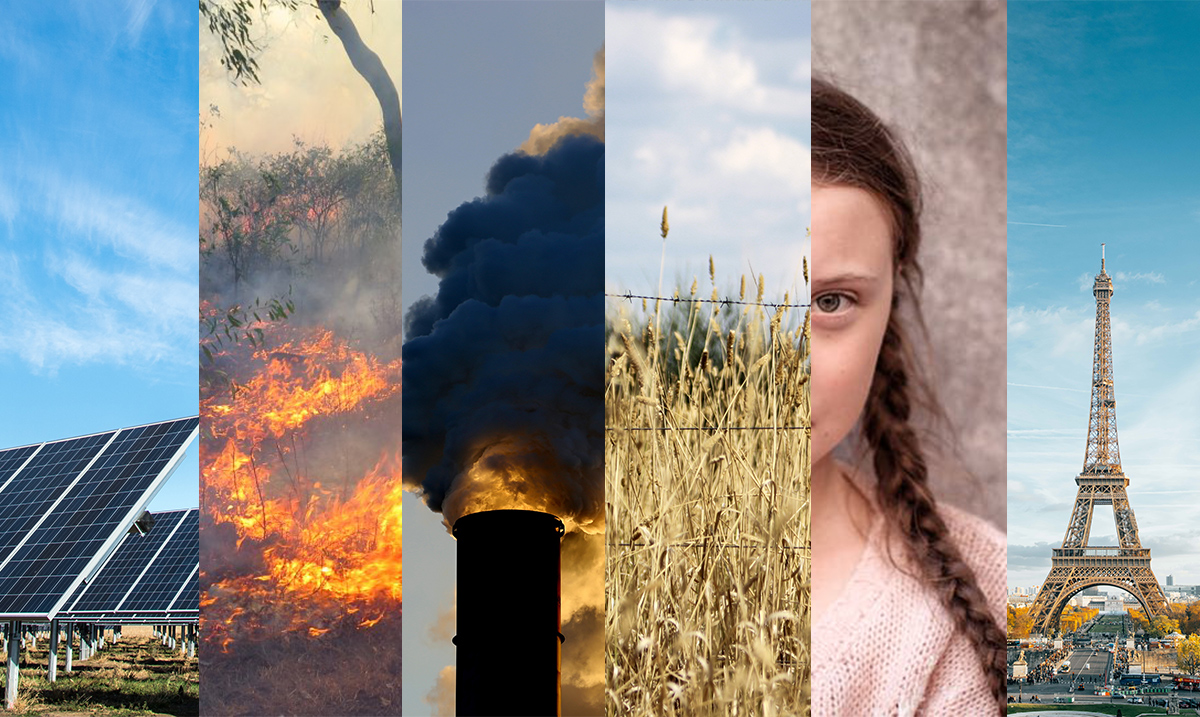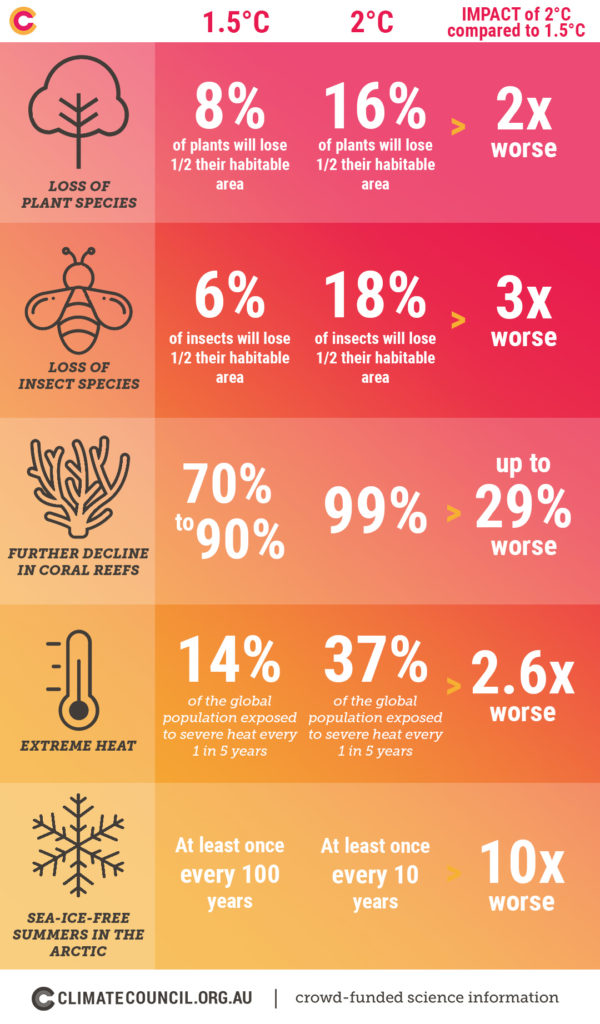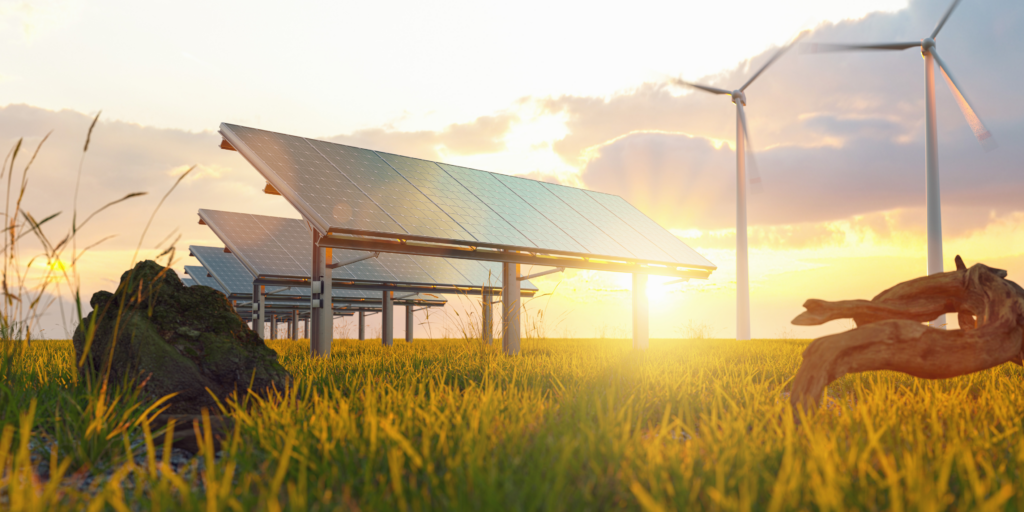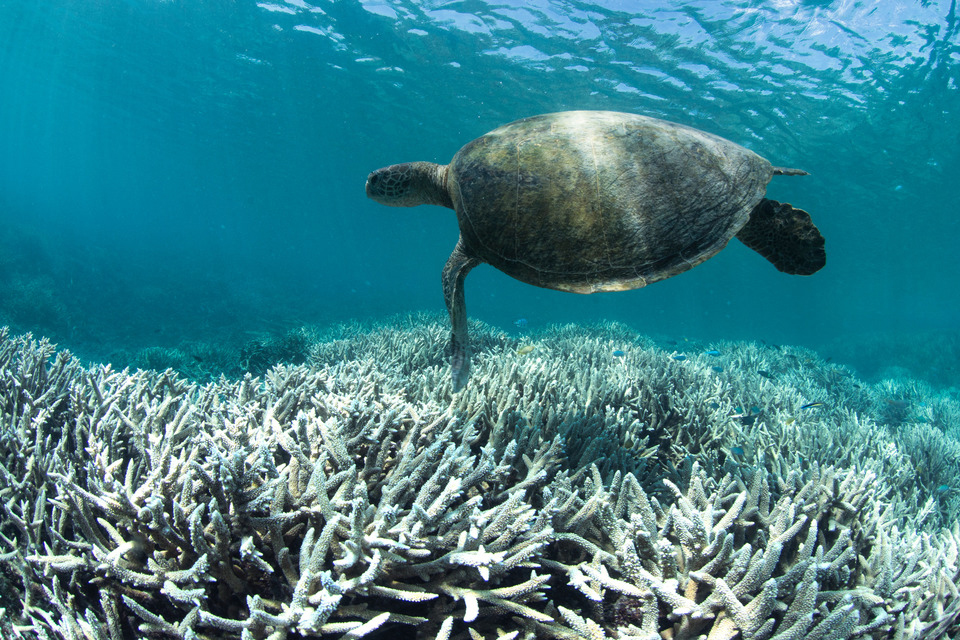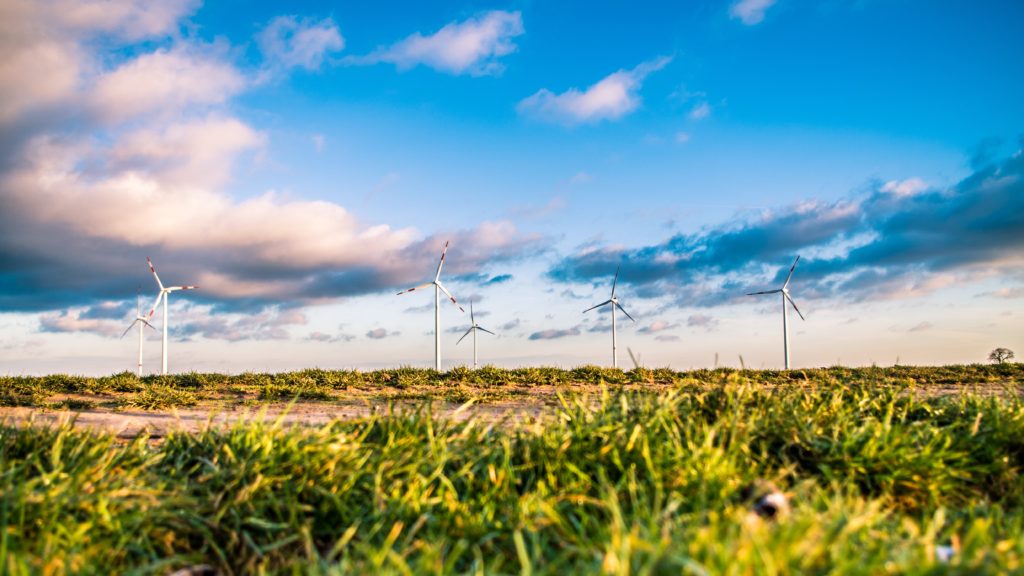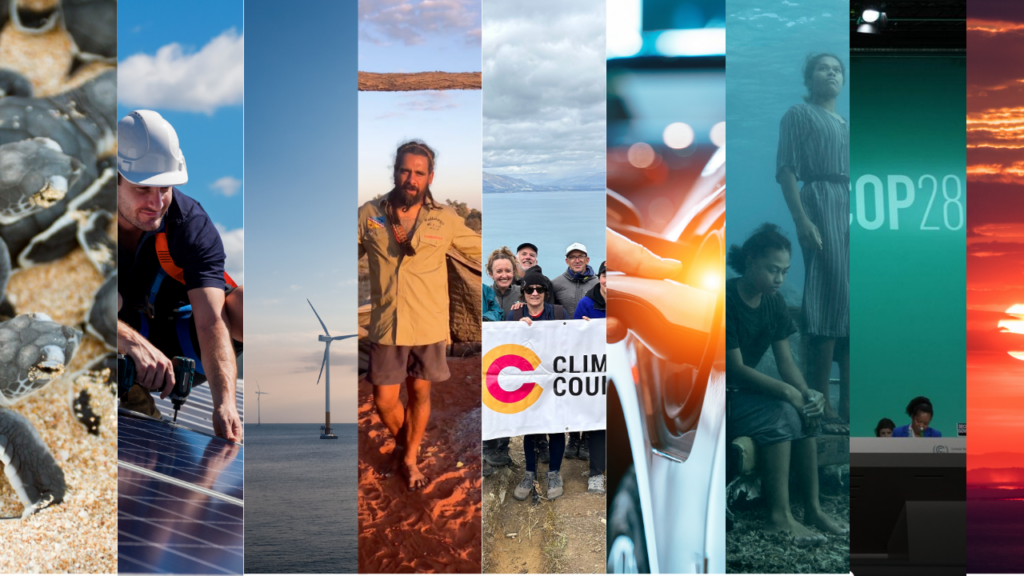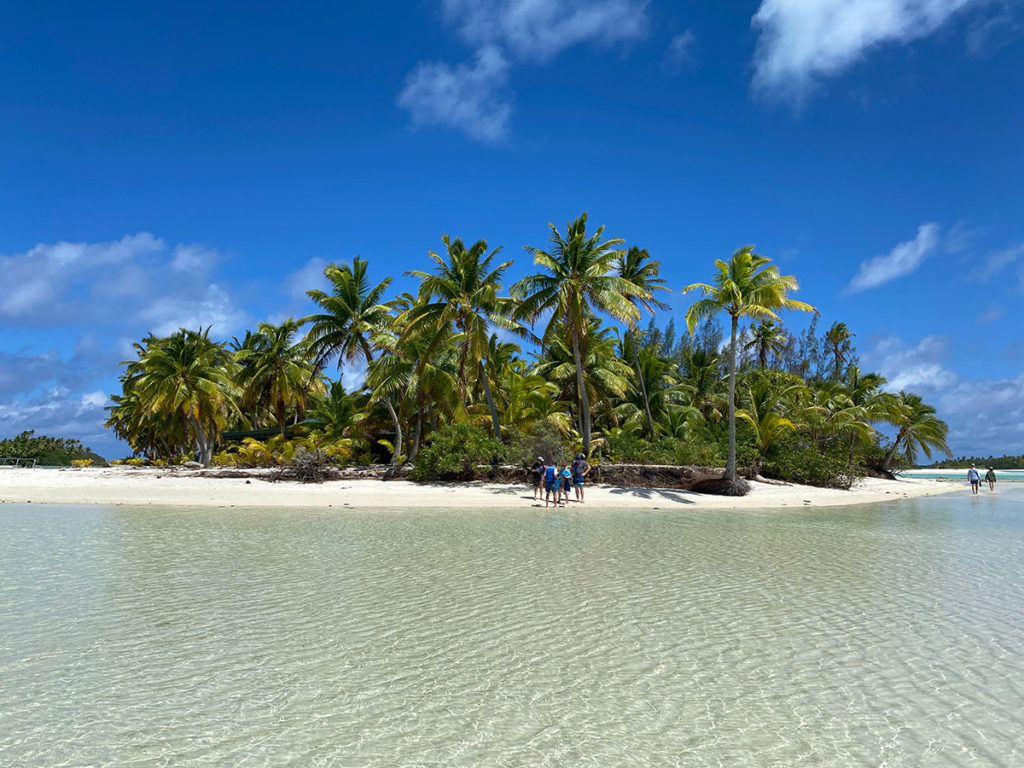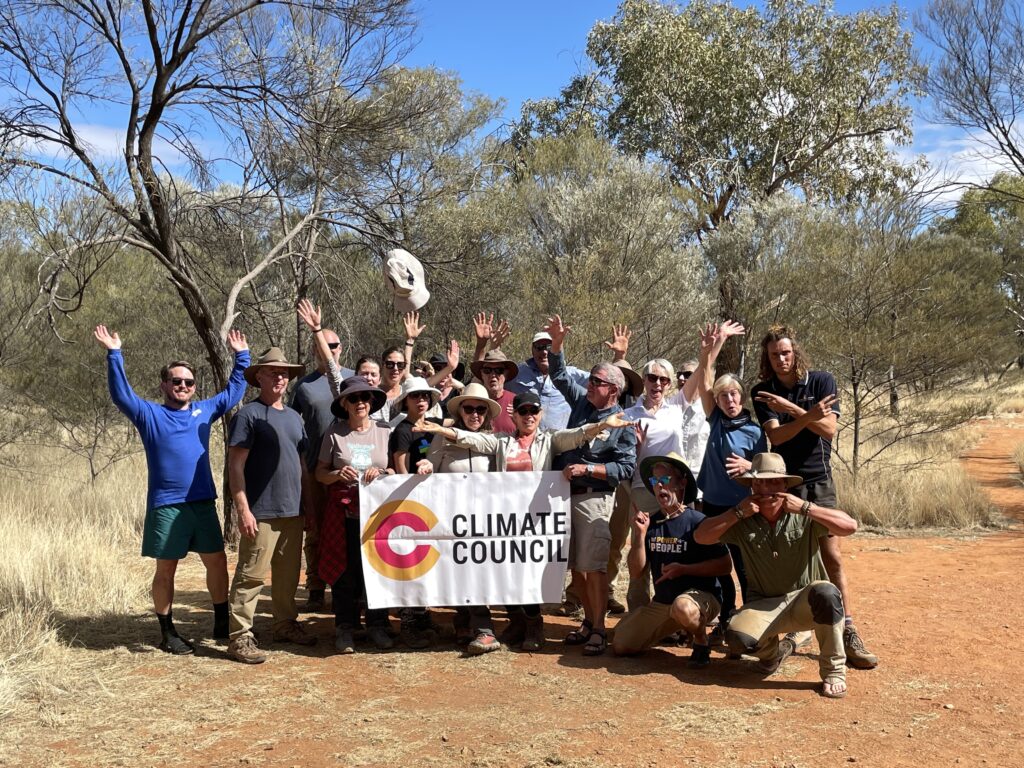As one decade closes and another begins, it’s time we take a moment to reflect on climate action over the past ten years. We’ve compiled our top 10 memorable climate moments from the decade that was – the good, the bad and the ugly.
This was the critical decade for action on climate change. Scientists warned that failing to adequately reduce greenhouse gas emissions during this period would have major consequences for our economy, society and way of life into the future.
Sure, progress has been made, but it’s clear there’s still a lot that needs to be done.
Here are our top 10 climate moments of the past decade (in date order):
1. July 2012 – Carbon price begins
Kicking off the decade’s important climate milestones is a policy tool that dominated Australia’s political discussions for many years: the carbon pricing mechanism.
Coming into action in July 2012, the carbon pricing mechanism put a price on Australia’s carbon pollution. It meant that liable companies (those who emitted 25,000 tonnes of greenhouse gases per year, not including those in transport or agriculture sectors), had to pay a price for the emissions they produced. About 60% of Australia’s total carbon emissions were covered by the scheme. Unfortunately, these gains were short lived (as you will find out in milestone number 3).

2. September 2013 – The Climate Commission was abolished, and the Climate Council was born
The Climate Commission was abolished as the very first act of the Abbott Government. But the public still demanded authoritative, independent and science-backed information about climate change – and so, on 23rd September 2013, the Climate Council was crowdfunded into existence.
Watch the video of how we were sacked (!) and re-launched into something way more powerful here.
The Climate Council is now six years old, and it is still our committed community that powers the critically important work we do. Click here to chip in!
3. July 2014 – Carbon price repealed
Over the period that the carbon price was in place (from July 2012 to July 2014) emissions dropped by roughly 2.6% (or 14.4 million tonnes) (land sector aside). Greenhouse gas emissions dropped 1.8% in the first year (the largest annual decrease for the entire decade prior) and then a further 0.8% in the second year of the carbon price (the second-largest annual decrease for the entire decade prior).
Despite this, in July 2014, the Abbott Government repealed the carbon pricing mechanism and replaced it with the heavily criticised and ineffective Emissions Reduction Fund (ERF). This left Australia with no credible policy to reduce greenhouse gas emissions.
In the five calendar years from 2014 to 2018, Australia’s emissions have gone up and up, and the nation remains without a credible climate policy in place.
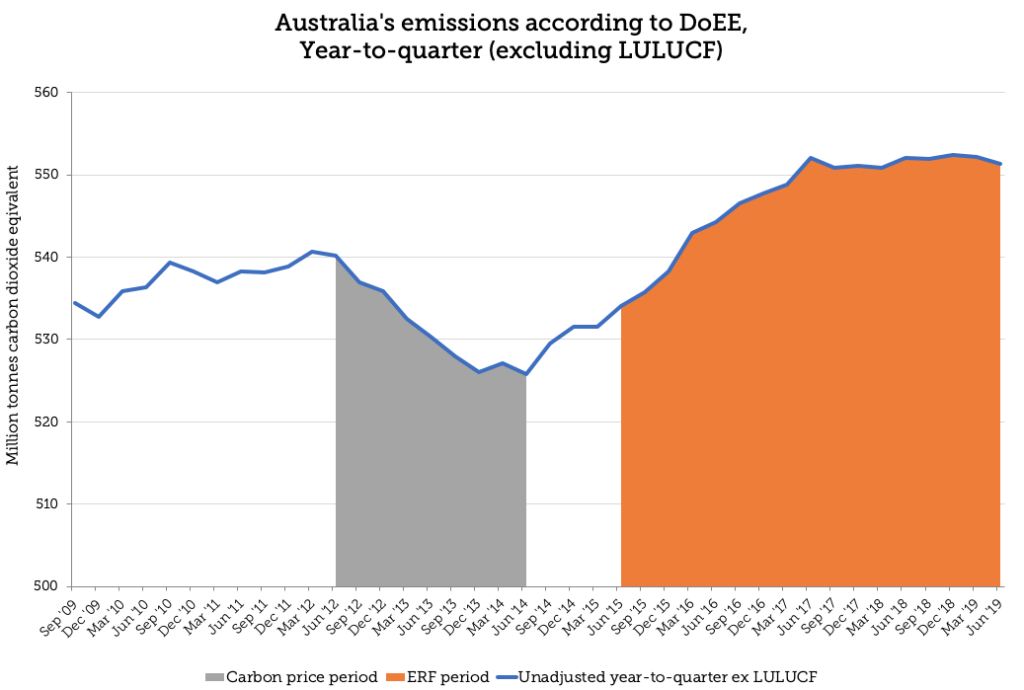
Source: NGGI Quarterly Update June 2019
4. December 2015 – Paris Climate Agreement
In December 2015, 190 countries from around the world, including Australia, came together at the United Nations climate change conference to sign the Paris Climate Agreement.
Signatory countries committed to limit global temperature rise to well below 2°C (above pre-industrial levels) and to pursue efforts to limit the temperature increase even further to 1.5°C. To this end, all parties were required to put forward their best efforts (in the form of emissions reduction targets called ‘nationally determined contributions’), and to strengthen these efforts in the years ahead. As part of this, Australia set a target to reduce its emissions by 26-28% on 2005 levels by 2030.
Having a clear target in place is a good thing, but Australia’s target fell significantly short of what is required to effectively tackle climate change – and still, we are not on track to reach it. A science-based target for Australia would be cutting emissions by around 65% below 2005 levels by 2030 and reaching net zero emissions by around 2040.

5. July 2017 – Launch of the Cities Power Partnership
Recognising the local legends driving climate action in the absence of federal leadership, the Climate Council launched the Cities Power Partnership in July 2017.
Now representing 115 councils from around Australia, the Cities Power Partnership has grown to become Australia’s largest local government climate action network. The Partnership supports and empowers local communities to take climate action into their own hands, and creates cross-community connections to enable ideas-sharing of tangible solutions to the climate crisis.
6. 2017 – Solar stole the show
In 2017, the world invested more in new solar than in coal, oil, gas and nuclear energy combined! This was a landmark moment in cementing the fact that clean, renewable energies make sense not only for the climate, but for the global economy as well. Meanwhile, worldwide investment in coal plummeted by 75% between 2016 and 2019.
7. August 2018 – Greta’s first strike
On August 20, 2018, a young Swedish girl stood alone on the steps of her nation’s parliament, to demand action on climate change. A year and a half later, Greta Thunberg is a household name.
Greta has inspired a series of global strikes, addressed the United Nations Climate Change Conference, and has been nominated for a Nobel Peace Prize – and she’s only 16.
The global climate strikes on September 20-27, 2019, saw students and workers from 4,500 locations in 150 countries take to the streets to demand action on climate change. Around 7.6 million people joined in what has since been dubbed the biggest climate protest the world has ever seen – a testament to the growing global demand for climate action.
“Greta Thunberg was just a single voice, a teenage girl who felt compelled to act. Her extraordinary determination and her courage in speaking truth to power has inspired millions of people around the world.” – Climate Council CEO, Amanda McKenzie.
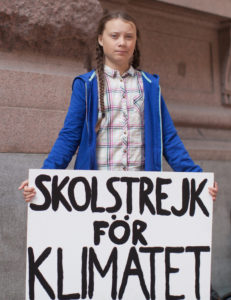
8. October 2018 – UN IPCC released its 1.5 degrees special report
The United Nations Intergovernmental Panel on Climate Change (IPCC) released a landmark report in October 2018, investigating the impacts of a 1.5°C rise in temperature (above pre-industrial levels).
The report found that climate impacts will amplify quickly between just 1.5°C and 2°C, meaning emissions would have to be reduced more deeply and rapidly than scientists originally thought.
The international report served as a harrowing wake up call, reminding the world of the urgent need for international climate action.
Adapted from WRI (07/10/18) based on data from IPCC (10/2018).
9. 2018 – Hottest Australian summer on record.
The summer of 2018/2019 was the hottest on record for Australia, with 206 temperature records broken in just 90 days. 2018 was also a year of extreme weather right around the world – hurricanes and wildfires in the US, a crippling drought in South Africa, extreme heat and fires in the Nordic region, and flooding in Japan. Economic losses associated with weather-related disasters globally in 2018 were estimated to be US $215 billion.
Climate change isn’t just making temperatures rise – it’s influencing all extreme weather events and making them worse, including heatwaves, droughts, floods and bushfires.
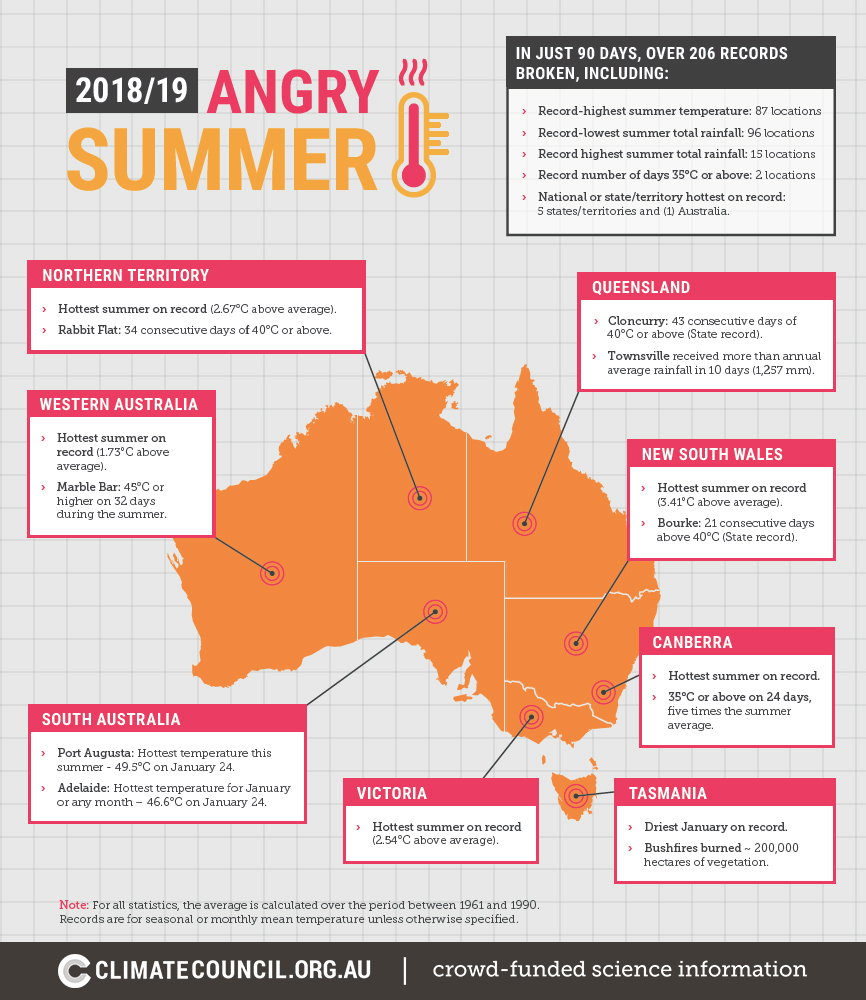
10. September – December, 2019 – Unprecedented Australian bushfires
In 2019, every state in Australia experienced bushfires before summer even began.
At the beginning of the year, the Climate Council established the Emergency Leaders for Climate Action (ELCA) – a group of 22 former emergency service personnel who came together to call for action on climate change as extreme weather worsens.
ELCA’s fears of a super-charged fire season were realised when, in November 2019, unprecedented bushfires raged across NSW and QLD, burning through around 2 million hectares of land, claiming lives and damaging hundreds of properties.
These bushfires are devastating proof that climate change impacts are here now. Climate change is making our fire seasons longer and more dangerous, and Australia is not prepared.
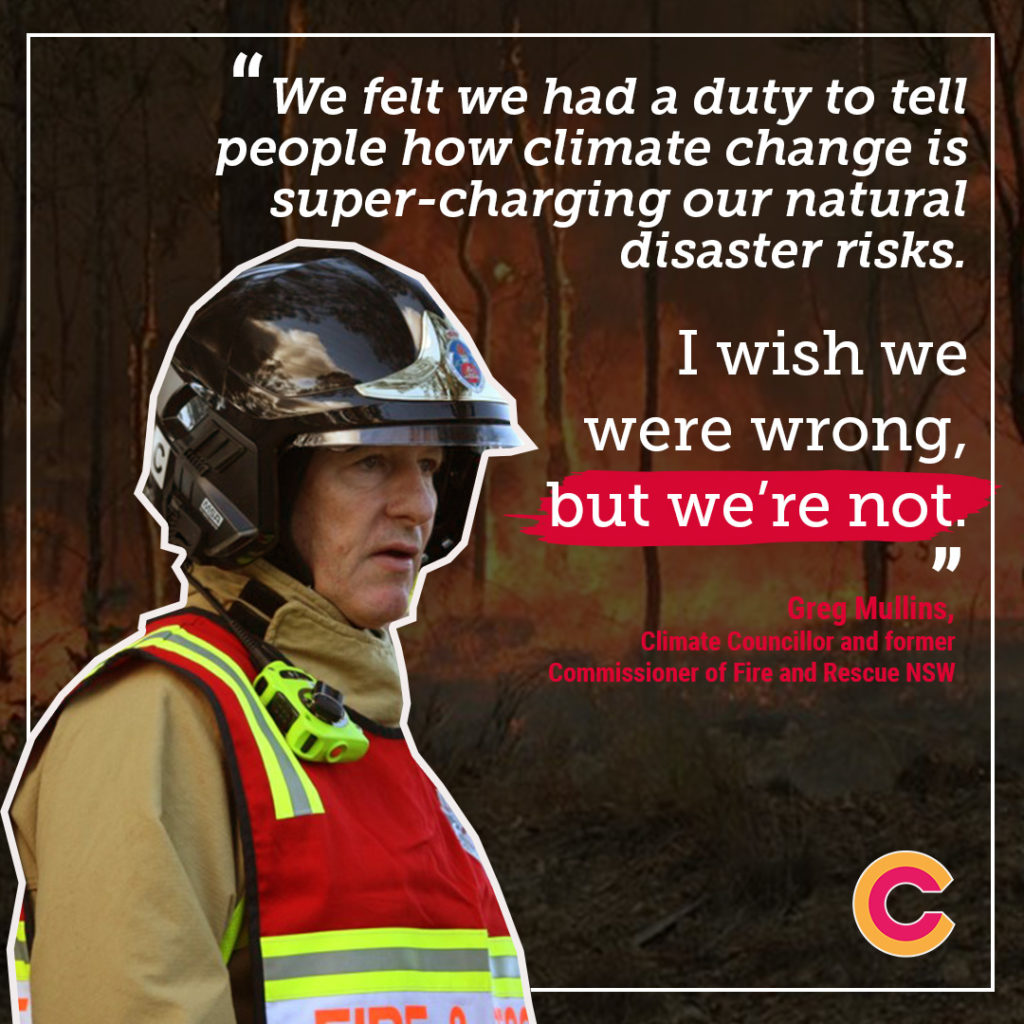
As we bid farewell to the critical decade and usher in a new era, it’s clear that implementing climate solutions is more important than ever.
We have a lot of work to do – but momentum is building, solutions are becoming more affordable every day, and the conversation around climate change, both in Australia and abroad, is transforming into one of action, rather than debate.
As the sunniest and one of the windiest countries in the world, Australia has a chance to power the country with abundant and low-cost renewable energy, with enormous benefits for our economy, environment and communities. The best part is, climate solutions will benefit not just the planet, but all Australians. Delaying action will only amplify the impacts of climate change – and will cost far more in years to come.
We must ramp up our efforts now – we simply have no other choice.
Join the Climate Council to learn about how you can get involved in climate action today.

